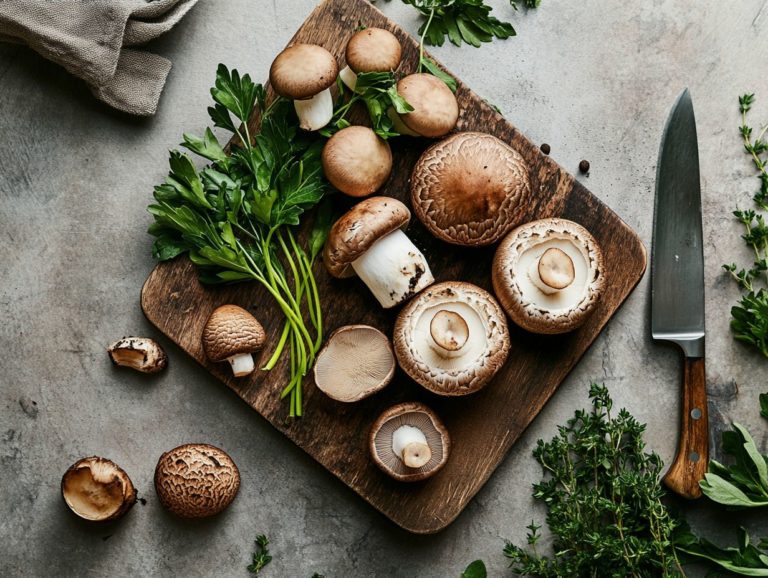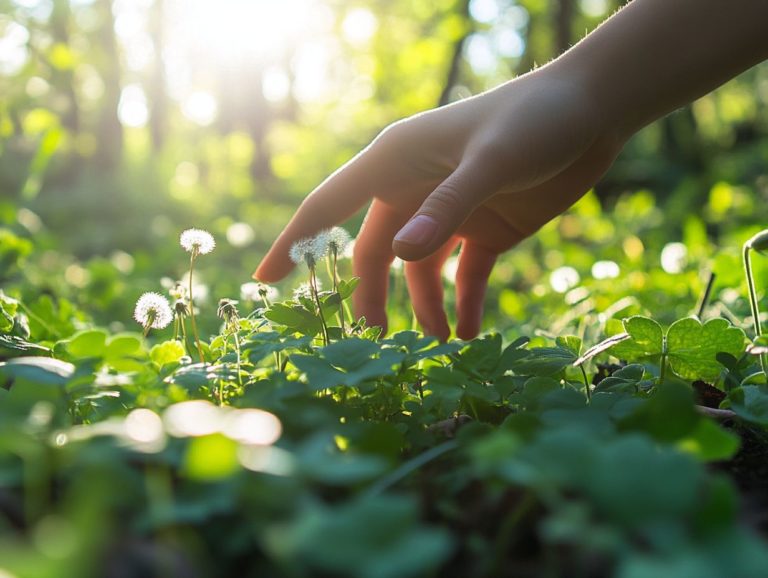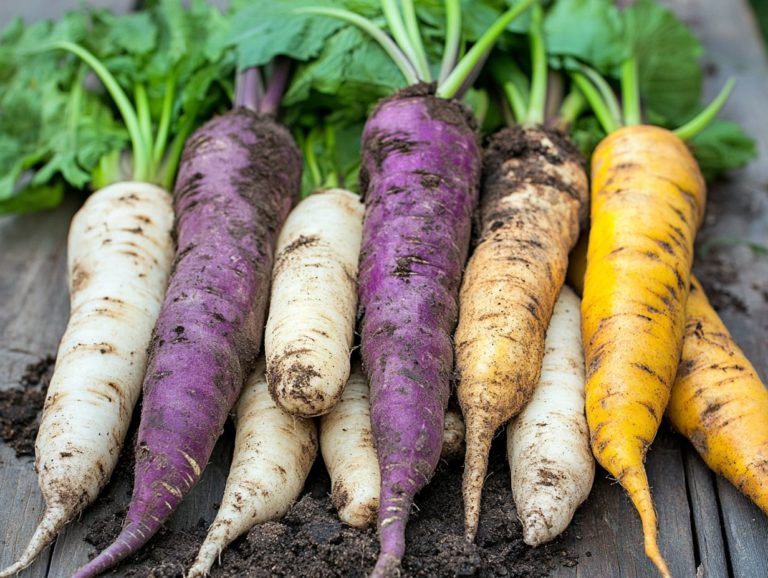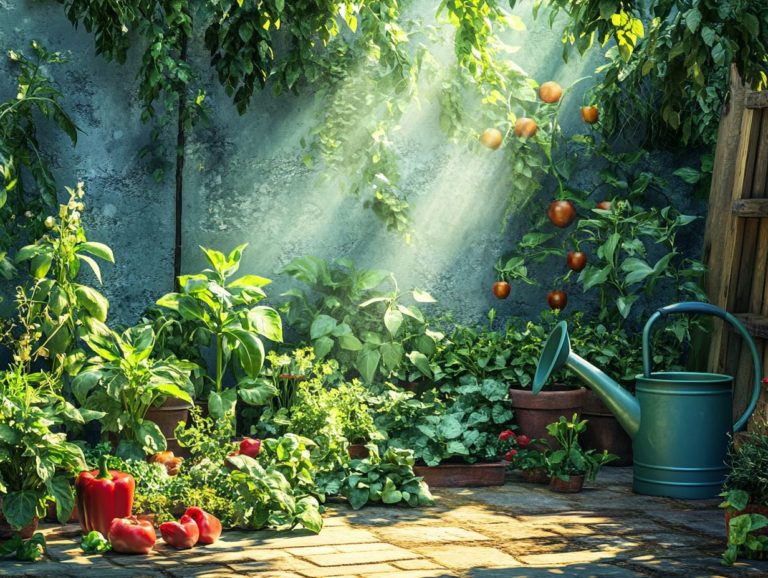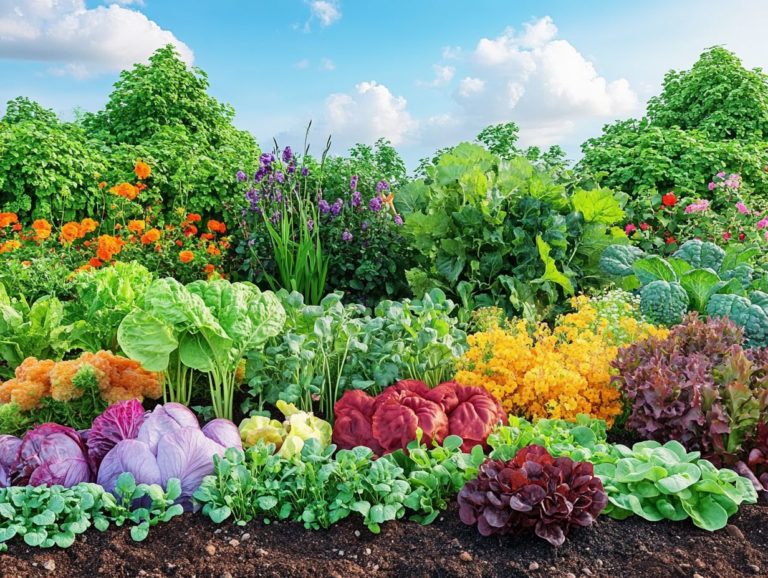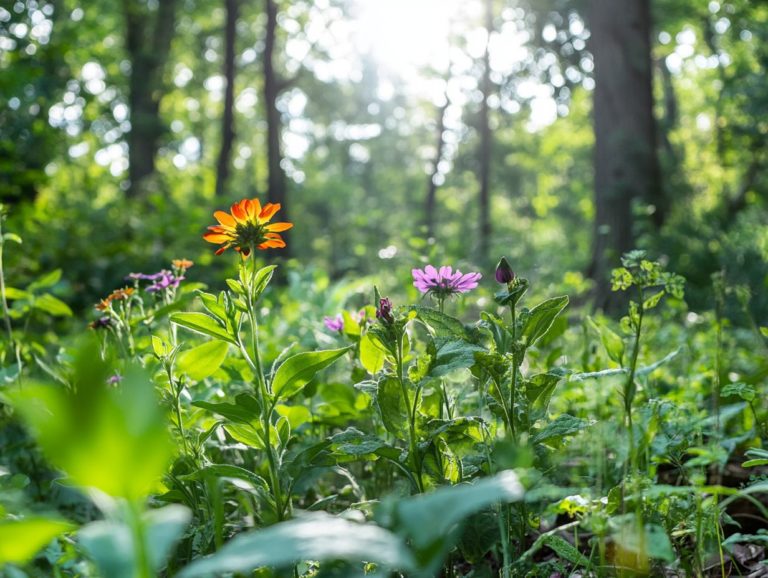5 Tips for Foraging Edible Sea Vegetables
Exploring sea vegetables reveals a treasure trove of culinary delights and health benefits.
From nutrient-rich wakame to savory dulse, these oceanic greens offer delightful flavors while being environmentally conscious choices for your meals.
Here are essential tips for foraging edible sea vegetables: recognize them, ensure their safety, and enjoy their impressive nutritional rewards.
Let s dive in and discover how to include these marine gems in your diet!
Contents
- Key Takeaways:
- 1. Know Your Sea Vegetables
- 2. Check for Safety and Quality
- 3. Harvest at the Right Time
- 4. Properly Prepare and Store Your Sea Vegetables
- 5. Consider Sustainability and Environmental Impact
- What Are Sea Vegetables and Why Should You Forage for Them?
- Frequently Asked Questions
- What are some tips for collecting edible sea vegetables?
- What are some popular types of edible sea vegetables?
- How do I know if a sea vegetable is safe to eat?
- How can I add sea vegetables to my meals?
- What safety precautions should I consider when foraging?
- Can I forage for sea vegetables all year long?
Key Takeaways:
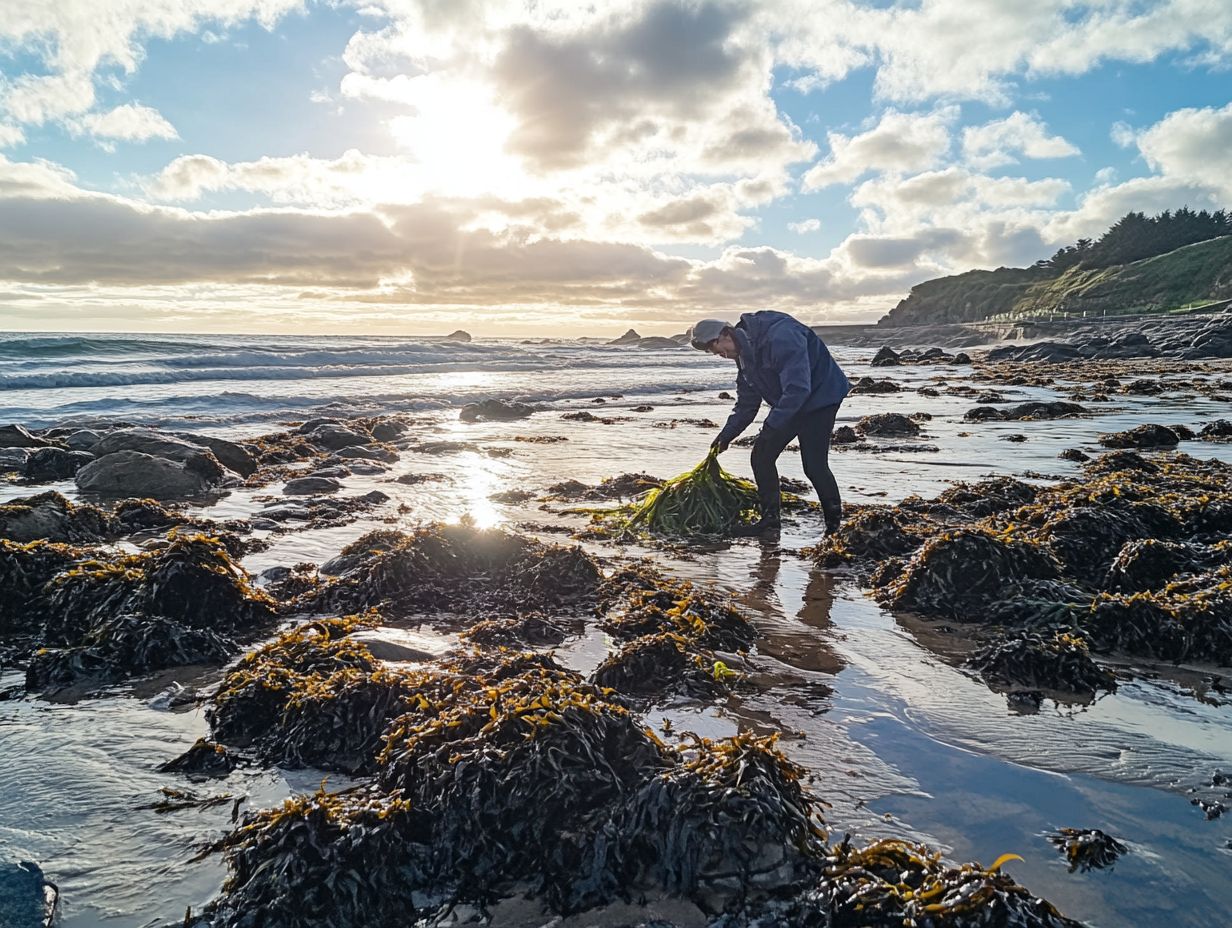
- Know your sea vegetables by researching their types, nutritional benefits, and safety, especially for beginners.
- Ensure safety by checking for harmful contaminants and harvesting from clean waters.
- Harvest at the right time, when sea vegetables are at their peak flavor and texture.
1. Know Your Sea Vegetables
Understanding sea vegetables is crucial for anyone who wants to forage, especially now when food costs are rising. Learning how to identify edible seaweeds can enhance your foraging skills.
These nutritious options add unique flavors to your table and connect you to coastal ecosystems that often go unnoticed.
Standout sea vegetables include Irish moss, dulse, and kombu, each with its unique culinary charm and health benefits.
Irish moss is celebrated for its thickening properties. It can be added to smoothies or desserts, enriching them with minerals.
Dulse, with its savory flavor, is wonderful in soups or salads and is packed with vitamins. Kombu elevates broths with a savory taste and is rich in iodine.
Stay informed about local restrictions and sustainable harvesting guidelines to protect these resources for future generations.
2. Check for Safety and Quality
Before foraging for sea vegetables, prioritize safety and quality. Pollution can make seaweeds unsafe for consumption, so it’s helpful to explore cooking with wild seaweed for delicious and safe recipe ideas.
Resources like John Kallas’s guidebook can help you harvest responsibly.
Know the local water quality. Pollutants affect both the plants and your health when consumed. Watch for pollution sources like wastewater discharge.
For beginners, recognizing signs of a safe environment is essential. Look for clear waters, thriving marine life, and areas away from industrial zones.
Check local advisories and seasonal restrictions for added safety.
By taking these precautions, you can enjoy the ocean’s bounty while keeping your health intact.
3. Harvest at the Right Time
Harvesting sea vegetables at the right time is essential for freshness and nutritional value.
Understand seasonal cycles and tidal patterns. Some sea vegetables flourish in spring, while others are abundant in late summer.
Tide charts can help you find the best times for foraging, especially during low tides.
Practice responsible harvesting techniques by cutting instead of uprooting, allowing the plants to regenerate for future harvests.
4. Properly Prepare and Store Your Sea Vegetables
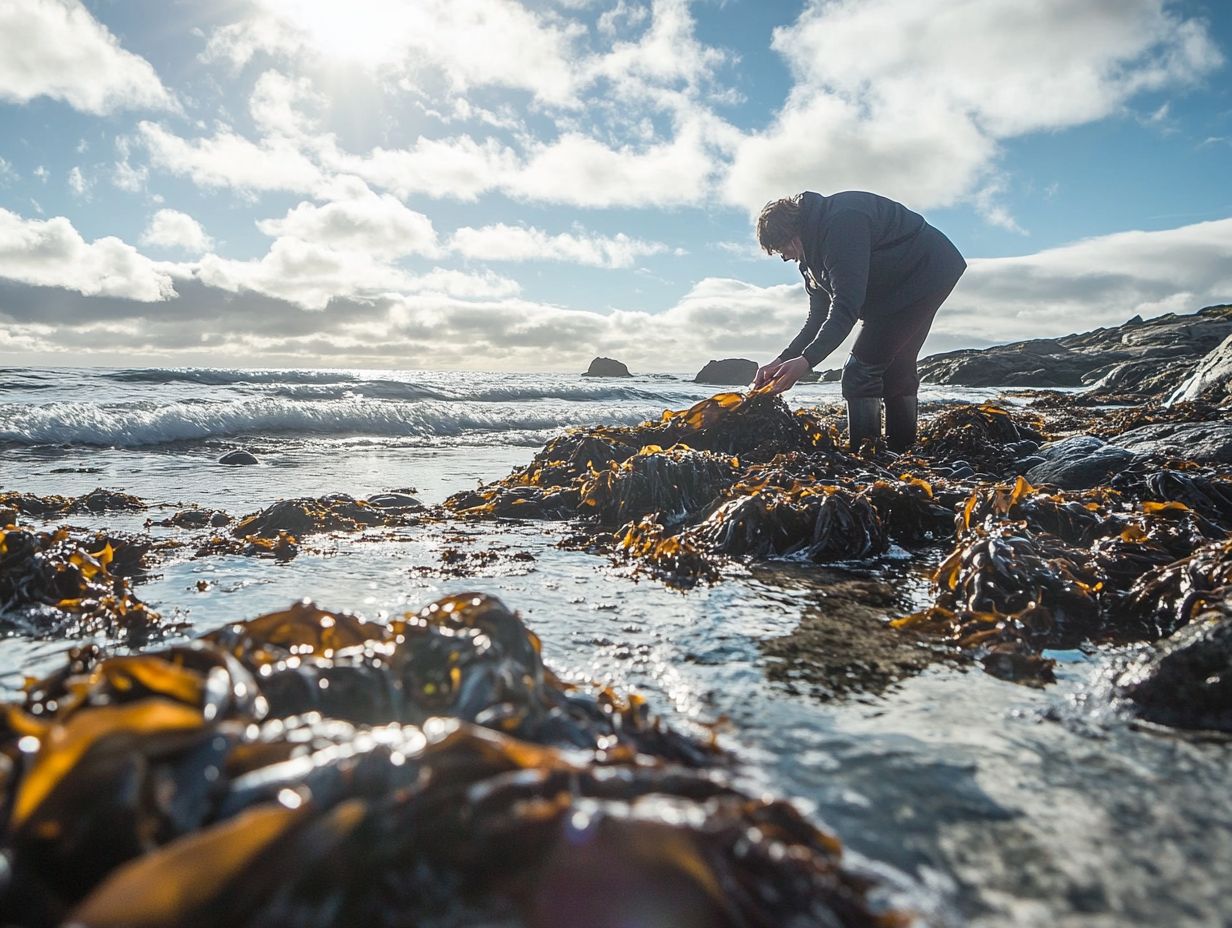
Proper preparation and storage of sea vegetables are essential for maximizing their nutritional benefits and culinary potential. These nutrient-rich ingredients can enhance dishes like seaweed salad and act as a healthy supplement in many meals.
To begin with Kombu, rinse it gently under cold water to remove any lingering sand or grit. Then, soak it in water for about 30 minutes to allow it to fully rehydrate.
For Wakame, a quick rinse followed by a soak in lukewarm water for approximately 10 minutes will suffice.
After preparing them, it’s crucial to drain any excess moisture for both types. Store them in an airtight container in the refrigerator to ensure they remain fresh for longer.
For delicious meal integration, consider tossing rehydrated Kombu into soups or stews to add depth. Wakame, on the other hand, can be seamlessly incorporated into salads or stir-fries, providing a delightful flavor boost along with added nutrition.
5. Consider Sustainability and Environmental Impact
When foraging for sea vegetables, it s essential to consider sustainability and environmental impact. Responsible harvesting practices not only safeguard the health of the ecosystem.
They also ensure adherence to local rules and regulations, maintaining balance within coastal habitats.
By embracing sustainable harvesting methods, you contribute to the preservation of crucial marine ecosystems. This allows seaweed farming practices to thrive alongside traditional foraging.
These approaches bolster variety of life, which is vital for resilience against climate change and pollution. Following local regulations serves as a protective measure, ensuring that future generations can continue to enjoy and utilize these resources.
Ultimately, adopting these practices enriches the environment and secures food availability. Healthy marine habitats yield better harvests, ensuring that the ocean’s bounty nourishes communities for years to come.
What Are Sea Vegetables and Why Should You Forage for Them?
Sea vegetables are nutrient-rich treasures found along coastlines and tidal zones. Foraging for sea vegetables, as well as learning tips for identifying wild herbs, opens a world of delicious and nutritious possibilities!
By incorporating local and wild sea vegetables into your diet, you not only enhance your meals but also embrace a sustainable connection with nature especially in coastal states like California and Oregon, where some local regulations may be in place.
These marine plants serve a vital ecological function, acting as natural filters for ocean water and providing essential habitats for diverse marine life.
The variety of sea vegetables available, including kelp, nori, and dulse, not only boosts your nutrition with a wealth of vitamins, minerals, and antioxidants but also introduces distinctive flavors and textures that can transform any dish into something extraordinary.
Foraging gives you the power to source these superfoods directly from your surroundings, promoting different species and sustainable harvesting practices. Engaging in this age-old tradition deepens your appreciation for marine ecosystems, emphasizing the importance of preserving these invaluable resources for generations to come.
What Are the Nutritional Benefits of Sea Vegetables?
Sea vegetables are a treasure trove of essential vitamins and minerals, positioning themselves as a superfood that can elevate your diet and enhance your overall health. Their unique nutrient profile is especially advantageous in coastal areas where they thrive.
These remarkable plants are celebrated for their impressive iodine (a mineral important for health) content, crucial for supporting thyroid function and regulating metabolism. They also pack a significant punch of calcium, necessary for maintaining strong bones, and iron, vital for oxygen transport in your blood.
Beneficial compounds like antioxidants and soluble fiber contribute to your digestive health and may even help reduce inflammation. By weaving these vibrant sea plants into your meals, you can experience heightened energy levels and improved overall wellness, making them an invaluable addition to any balanced diet.
What Are Some Common Types of Edible Sea Vegetables?
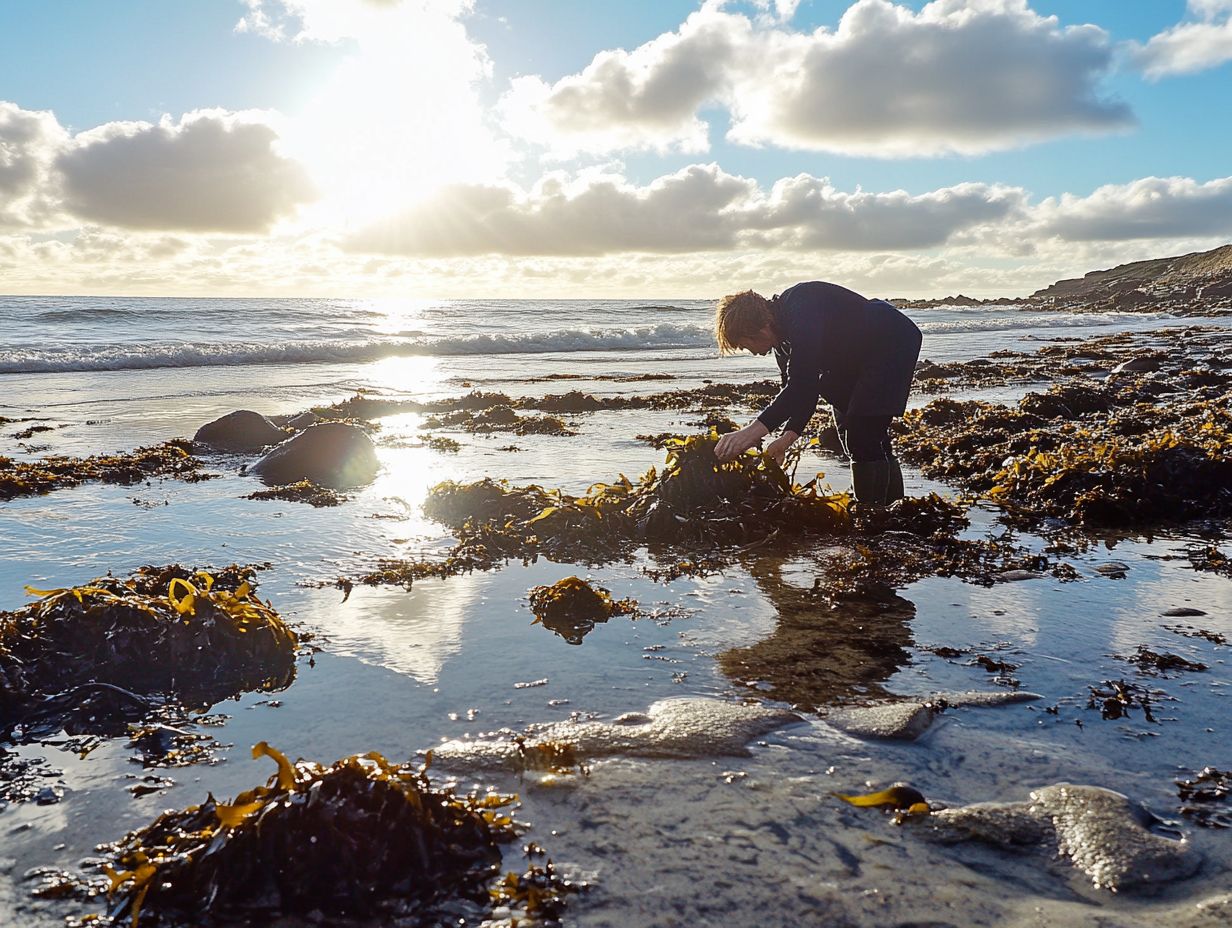
Common types of edible sea vegetables include a delightful array such as Dulse, Japanese Kombu, and Irish moss. Others like marsh samphire and sea purslane also bring unique flavors and textures that can elevate various dishes.
Dulse is the reddish seaweed often found along the North Atlantic coast. It offers a savory flavor and is packed with protein. It’s a fantastic choice for adding flavor and nutrition to salads and soups.
Then there’s Japanese Kombu, which is harvested from the chilly waters of the North Pacific. Its distinct flavor enhances broths and miso soups while providing valuable minerals like iodine, important for thyroid health, and calcium.
Let s not overlook Irish moss, which thrives along the rocky shores of Ireland and the Caribbean. This versatile ingredient serves as a thickening agent for desserts and drinks. It s also rich in vitamins and antioxidants, promoting better skin health and aiding digestion.
Each of these sea vegetables opens up a world of culinary possibilities while delivering essential nutrients to your plate.
How Can You Tell If a Sea Vegetable Is Safe to Eat?
Determining whether a sea vegetable is safe to eat requires a keen understanding of water quality and awareness of potential pollution. Both can pose health risks to novice foragers and experienced gatherers alike.
Adopt a comprehensive approach by paying attention to visual cues. Observe color, texture, and any unusual growths that could signal spoilage. Knowing where to find guidelines is vital; local fisheries departments often provide invaluable resources on safe gathering practices.
Trusted websites dedicated to marine life offer insights into possible contaminants and safe harvesting techniques. For anyone looking to incorporate sea vegetables into their diet, being aware of these indicators is essential for ensuring health and safety.
What Are Some Tips for Identifying and Harvesting Sea Vegetables?
As a budding forager, diving into the world of sea vegetables can be an incredibly rewarding adventure. Tapping into insights from experts like John Kallas can elevate your foraging skills, and using a resource like identifying edible seaweeds: a quick guide can ensure your harvest is both safe and sustainable.
To distinguish between various types of seaweed, such as nori and dulse, pay attention to their unique colors, textures, and growth patterns. Observing their habitats is equally important; some flourish in rocky environments while others prefer the gentle embrace of sandy beaches.
When it comes to sustainable harvesting, remember to take only a portion of the vegetation. This practice allows for regrowth and helps maintain the delicate balance of the ecosystem. The optimal time for harvesting is during low tide, which minimizes your environmental impact and provides a clearer view of what can be safely collected.
How Can You Incorporate Sea Vegetables into Your Diet?
Incorporating sea vegetables into your diet is a brilliant way to elevate your meals with a nutritious twist. Whether you’re tossing them into a vibrant seaweed salad or blending them into a smoothie for an extra boost, the possibilities are endless.
These nutrient-rich ingredients add unique textures and flavors to your dishes and are packed with health benefits, including essential vitamins and minerals like iodine, calcium, and antioxidants.
Culinary traditions across the globe, especially in Japanese, Korean, and Scandinavian cuisines, showcase the inventive use of sea vegetables think kelp in savory broths, dulse sprinkled over snacks, or nori elegantly wrapping sushi.
Experimenting with these versatile foods can transform your everyday meals. From hearty stews to quick stir-fries, you ll discover delicious ways to enhance both flavor and nutrition in your culinary repertoire.
Frequently Asked Questions
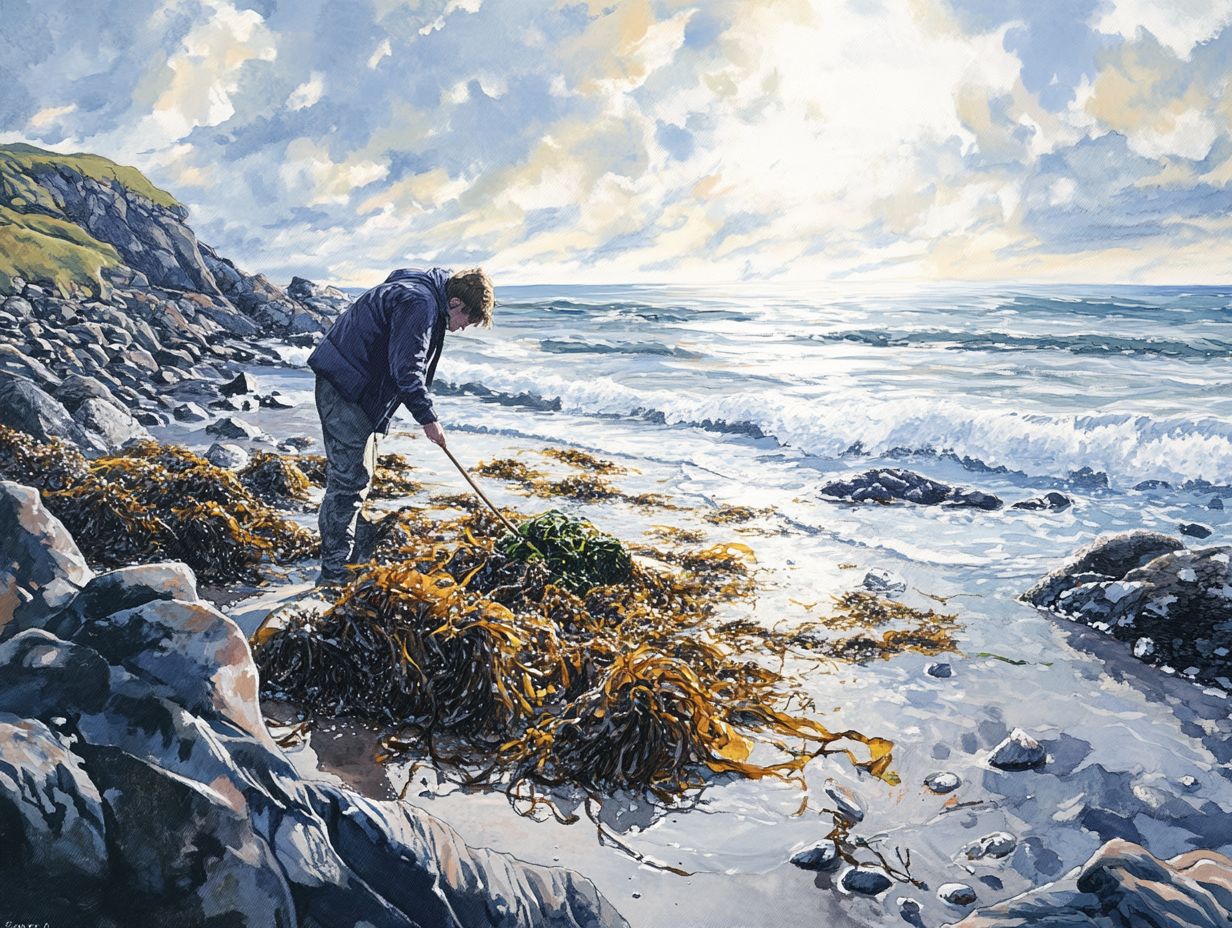
Start foraging today for a healthy, exciting addition to your meals!
What are some tips for collecting edible sea vegetables?
1. Research different types of edible sea vegetables and their habitats before you begin.
2. Always collect in clean, unpolluted areas where the vegetables are safe to eat.
3. Check local regulations to see if permits are needed.
4. Wear gloves and boots to protect yourself from sharp edges and poisonous plants.
5. Bring a guidebook or a knowledgeable friend for safety and identification help.
What are some popular types of edible sea vegetables?
Popular edible sea vegetables include nori, kelp, dulse, and wakame. Each offers unique flavors and nutritional benefits, so try different ones to discover your favorites!
How do I know if a sea vegetable is safe to eat?
Be sure a sea vegetable is safe before eating it. Look for local warnings, research its appearance, and consult an expert if you’re unsure.
How can I add sea vegetables to my meals?
There are many tasty ways to include sea vegetables in your diet. Add them to soups, salads, stir-fries, or sushi rolls!
What safety precautions should I consider when foraging?
When foraging, choose clean, safe areas and wear appropriate gear. For those new to this activity, following the top 5 tips for successful foraging is crucial. Always identify sea vegetables correctly before eating them.
Inform someone about your plans and location before heading out.
Can I forage for sea vegetables all year long?
You can forage year-round, but availability depends on the type and location. Always research specific seasons and check local regulations.

